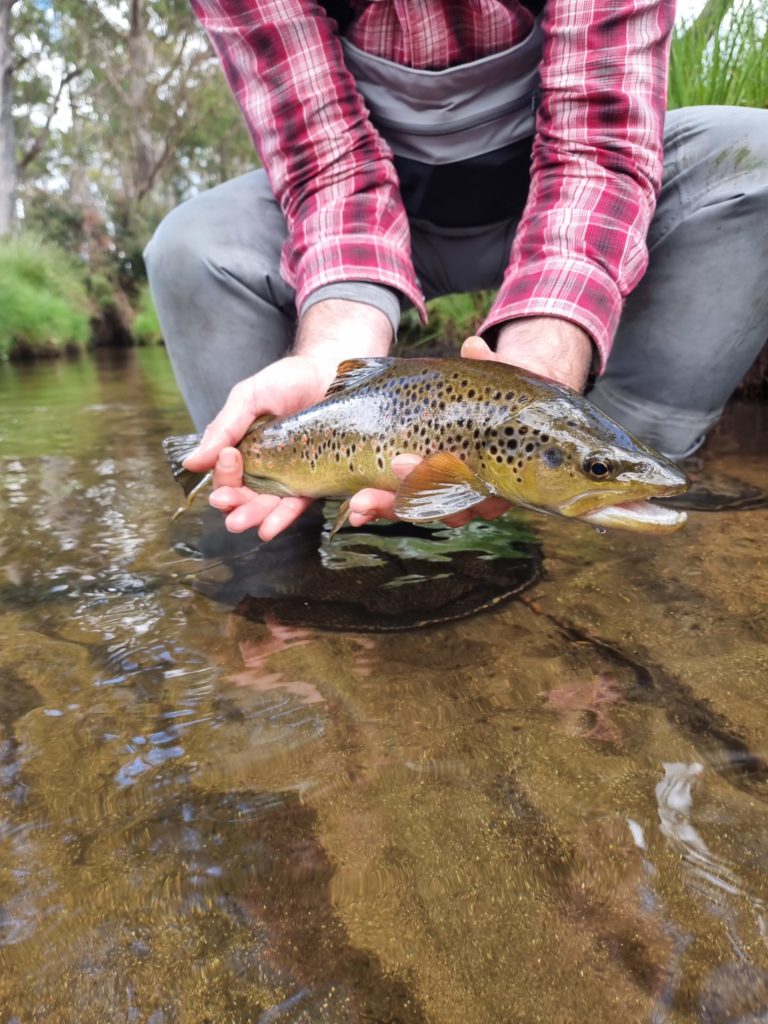The Tasmanian fly fishing season has moved into more regular predictability since December, and the high levels of spring. Day’s featuring influences from low pressure troughs and occassional easterly gusts are dynamic, featuring on and off hatches through the day, while steady highs are combining with perfect water levels and fish fattened by two seasons of great flows for excellent fishing. We’ve fished dries only since late December, and beetles of different forms are having a great season on the streams. the 1864 Scruffy and 1864 Blue Damsel are proving to be ever reliable go-to’s as usual, while the Foam Red Tag is undoing the more subtle trout. An interesting theme of this season has been fishing the shadows: contrary to most seasons, many of the better feeders are positioning themselves along feedlines in the shadows, rather than the sun.
Our Western Lakes fishing has been great, with super-healthy fish everywhere. Some of the small tarns are populated with strong and dominant year classes of young small fish, but the larger lagoons have some ripping fish in the 3-5lb class. The rivers are much more diverse in fish sizes, with nearly every year class being fat as butter. Coromorants are starting to show up in certain sections, and are likely to increase over the next season as the mainland begins to dry; this will result in a few harder sections along select rivers, but as always it will leave less but larger fish behind which can be great.
Caddis and beetles are the most reliable hatches so far on the rivers, with mayfly hatches being reasonably thin after the high spring water (floods). The wilderness lakes have had some great spinner falls, with large (size 10) black spinners usually early or late in the day. The 1864 Black Spinner has been our go-to pattern.

Fly fishing Tasmania with RiverFly 1864
